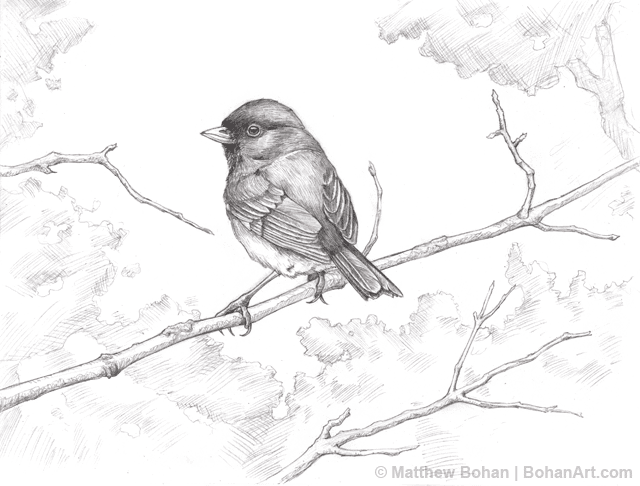
Dark-eyed Juncos make these long Michigan winters seem to go by a tiny bit faster. I grew up in Western New York where we had these friendly birds year round. Here in mid-Michigan they disappear in the spring and return in the fall. They certainly are tough birds. Dark-eyed Juncos like feeding on the ground and will eat the leftover seeds from our feeders. I’ll occasionally throw some millet on the snow, which they and the American Tree Sparrows seem to appreciate.
I started this drawing while waiting for my son during his pipe organ lesson. In theory it should be extra classy since he was working on two JS Bach pieces while I drew.
Drawing is typically something people do on their own in private. Of course most people start drawing in a fairly public area, the classroom. In that setting everyone is concentrating on their own work, so you are still basically drawing without any spectators. In art school we had many assignments to draw at zoos, museums, and other public places. I enjoyed the subject matter, but not the “performance” aspect of drawing. I think that it is safe to say that I’m not the most outgoing person in the world. I’m better about it than I used to be, but there is part of me that still likes to fade into the woodwork.
People don’t really run across artists drawing very often, so I would get a lot of comments and looks when drawing in public. I would avoid this by throwing on a set of headphones and listening to music. This was my version of the good old “Do Not Disturb” sign. It usually was effective, but occasionally I’d still get a tap on the shoulder and a dreaded conversation would start. I was pretty bad about shutting out the outside world and would even wear the headphones when my battery was dead. Maybe that was on the rude side? Perhaps, but it was effective.
Over the years I’ve had to draw in public a lot, including some downright strange locations. I got over the “drawing in public” thing when I was in graduate school for medical illustration. We had assignments and courses in surgical drawing. I’d gown up and head into the operating room with my sketchbook, pencil and camera. I may not know much, but I knew that the “Don’t Talk to Me Headphones” would be most unwelcome in the OR. In that setting the docs are walking you through the anatomy and particulars of the surgery that I would be illustrating. Now you’d think and hope that there wouldn’t be much time for people in that setting to scrutinize your work, but you’d be wrong! During the slow sections, the docs and nurses would come by, ask questions and make comments about the work.
Drawing in the OR is stressful for many reasons. First, you need to create an accurate drawing very quickly while making sense out of a bloody mess that is hiding some important anatomy. I needed to toss in lots of quick notes and labels for back in the studio when I’d illustrate the final work. There was simply no time to be self-consious. In addition to those stresses, this wasn’t the sort of place you could dream of using an eraser. I didn’t want to be breaking the sterile field by blowing off the old eraser crumbs into the patient’s chest cavity. I was terrified that the tip of my my pencil would crack and fly off, getting lost somewhere in the patient. In this setting I really had only “one bite at the apple.” Despite not being the best situation, I’d get lots of great feedback from the MDs. Upon finishing the preliminary drawings and bringing them back to the surgeons, they were usually pleased with the work and very positive. Then they requested some revisions to be made… “Let’s move that artery an eight of an inch that way. That nerve should be a little thicker. Yes, in this patient the anatomy wasn’t typical; normally that vessel branches a little higher.” Drawing in public was relatively low stress after that.
There are other odd places that I’ve drawn. I love the subject matter in natural history museums. Of course museums come with an abundance of people who have time on their hands. That is, without a doubt, a place for gabbers. Drawing in the cadaver labs in the Med School was always interesting. It was nice and quiet though. Of course there were also plenty of “people” there, but being dead they kept to themselves. Unfortunately, the formaldehyde stench in the cadaver lab didn’t keep to itself. It seeped into your skin and had serious tenacity, clinging to you even after a long scrubbing in the shower.
When drawing in the lab I’d don latex gloves, dissect and position things to draw and then take the gloves off. You don’t want to get any slop on your pencils or sketchbook. Taking off and putting on the rubber gloves to draw was a hassle. At a certain point I wondered why I even bothered because the stench seemed to have a life force that could totally ignore the latex gloves and permeate straight into the skin of my hands. Formaldehyde gets old very quickly. Late in the semester the preservative’s strength seemed to be fading a bit, and everything in the lab was starting to smell a bit “off” and look like freezer-burned turkey. Drawing in the lab wasn’t quite as much fun at that point. Despite the occasional gross moments, it was a fantastic opportunity that I really enjoyed.
I don’t like wasting time, so whenever I might have a bit of a wait, I’ll have a sketchbook handy. I draw while waiting for the kids at Sunday school, karate, basketball, music lessons, tennis, sitting on airplanes, and waiting for my allergy shots. At this point, other than work, I do almost all of my drawing in public places! Now drawing in public doesn’t really phase me at all. Most people are busy doing their own thing. The invention of the cell phone was a game changer. I think you could spontaneously combust and no one would even lift their heads up from texting or checking their Facebook accounts.


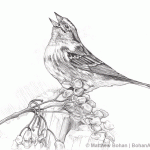
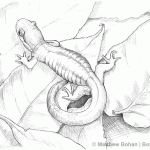
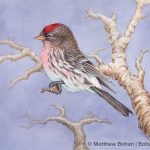

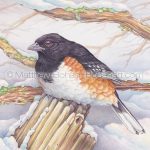
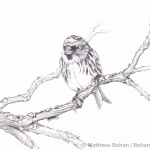
Leave a Reply